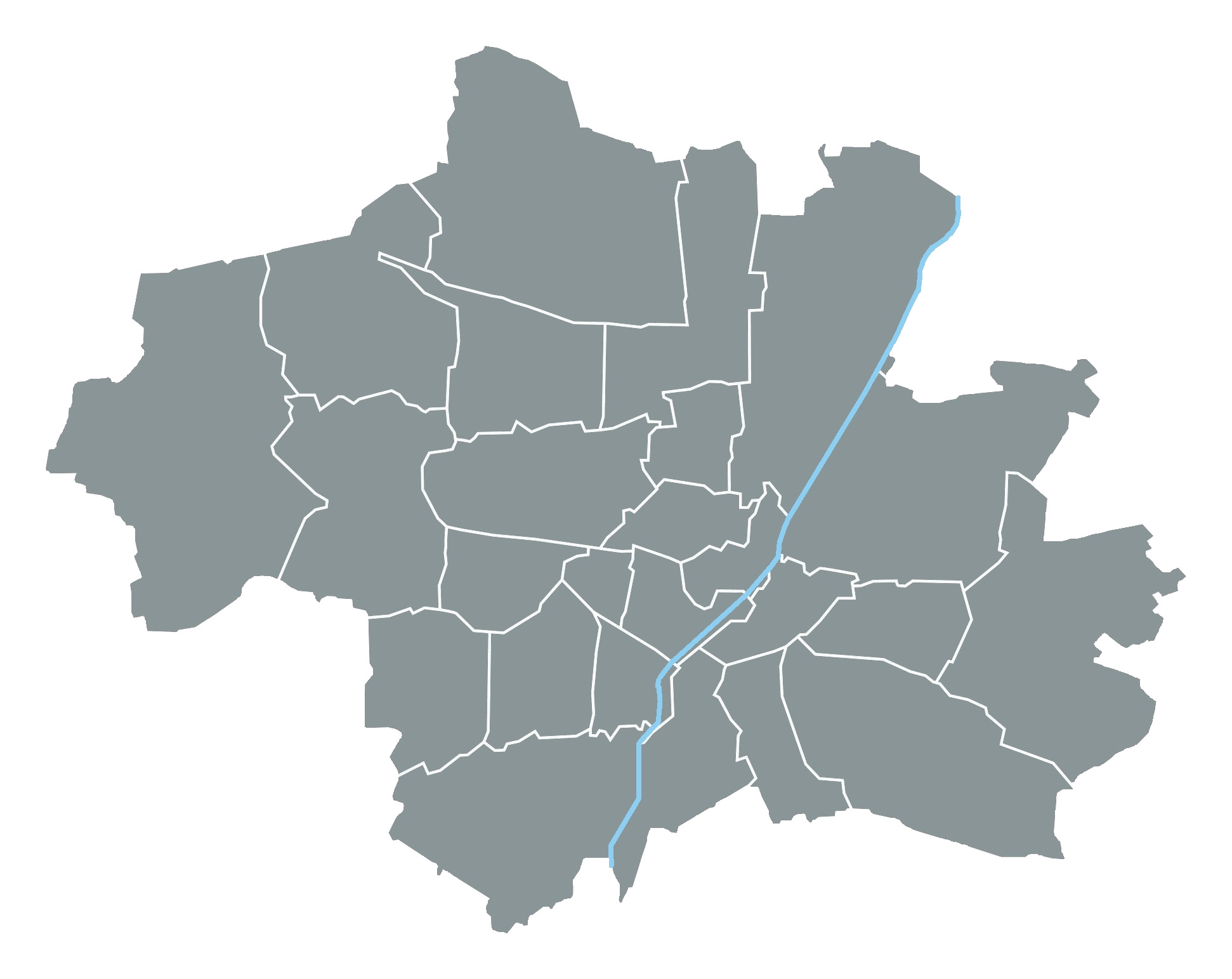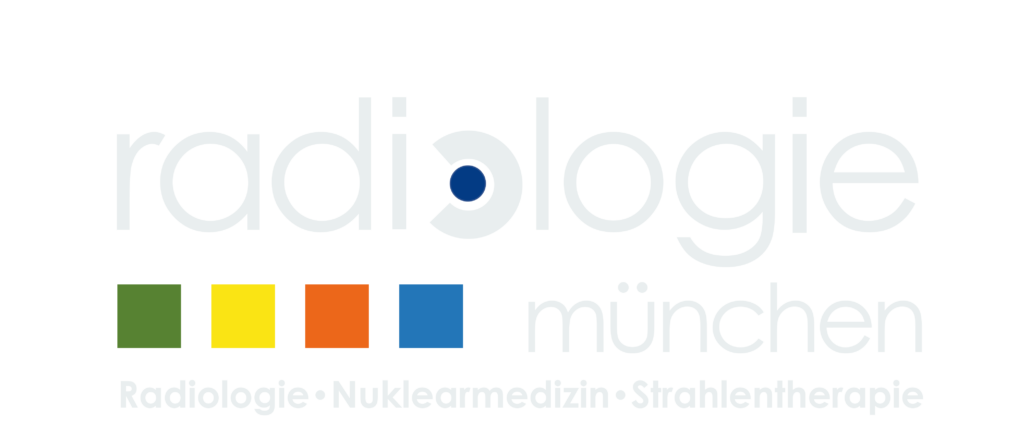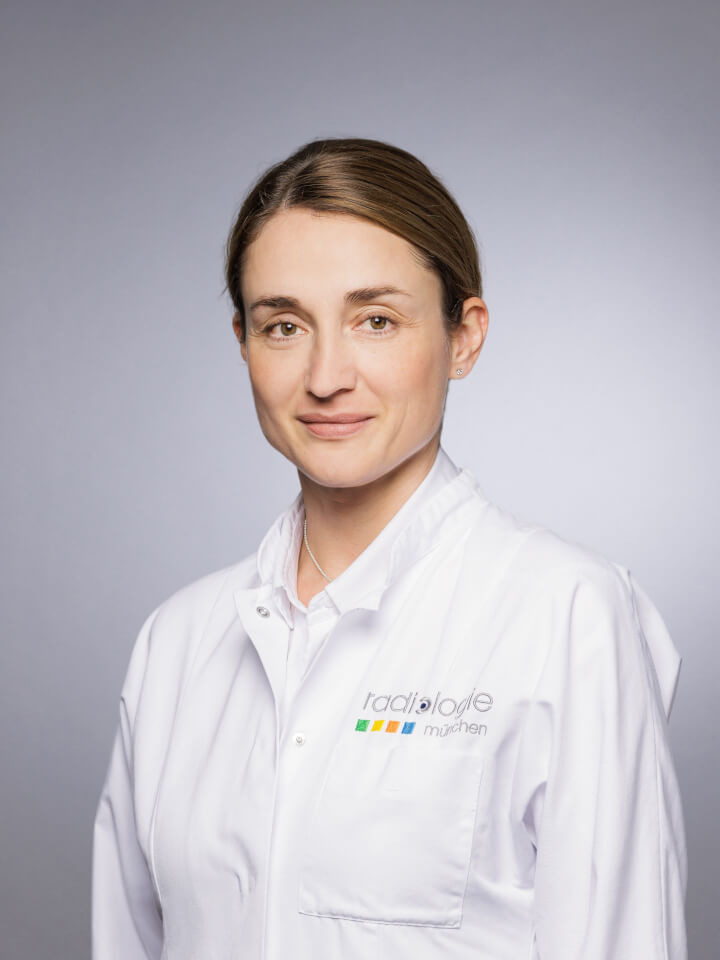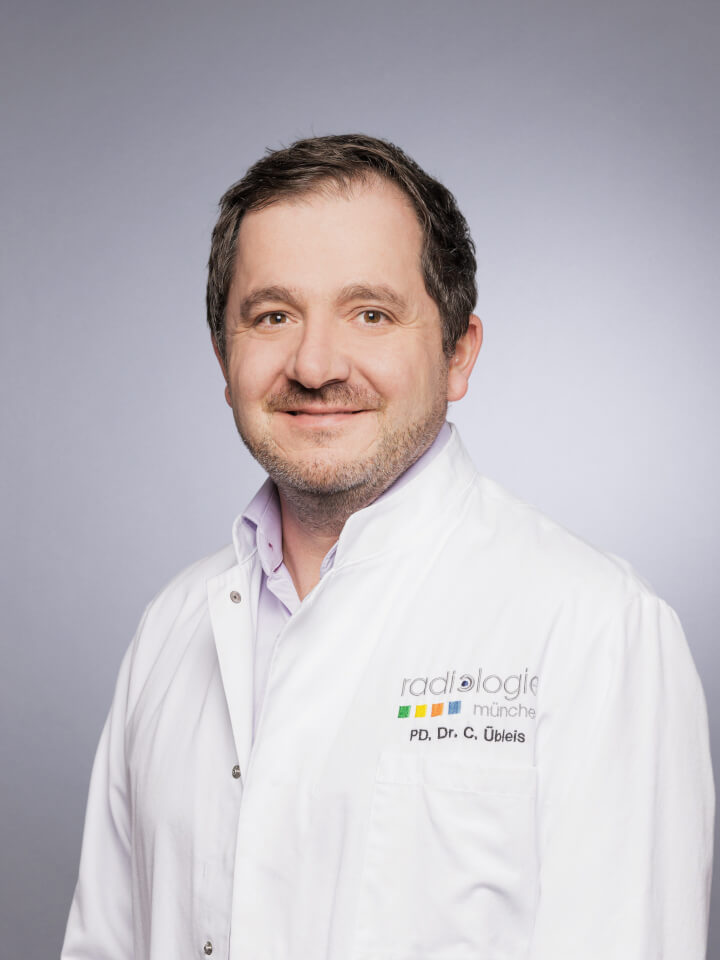Nuclear medicine diagnoses
In nuclear medicine, we administer weakly radioactively labelled substances in order to visualise biological processes in the body. For example, scintigraphy can be used to assess the function of the thyroid gland, the blood flow in the heart muscle or the metabolism of the bone.
A slightly different technique, “positron emission tomography” (PET/CT), is mainly used to examine tumour diseases. We can offer you both procedures to suit your needs.
Scintigraphic examinations
At our location in the Rotkreuzklinikum in Nymphenburg, we offer scintigraphic examinations. The most frequently examined organs are the thyroid gland, the lungs, the heart, the kidneys and the skeleton.


PET/CT with F18-FDG and PSMA
PET/CT combines two examinations in one device. Using “positron emission tomography” (PET), we can visualise biochemical processes in the body. Computed tomography (CT) shows us changes in the organs using X-rays.
Which examinations we offer, how they work and how to register – for more information click here.
Your nuclear medicine contacts
Feel free to contact us directly through any of the following channels! You can contact us by telephone during the practice hours of our location at Max-Lebsche-Platz in Munich Großhadern ( Mon-Fri from 8 a.m. to 6 p.m.) on 0049 89 2121 96 535.
Please feel free to use our registration forms, which you can send to us by e-mail to petct@radiologie-muenchen.de or by letter.




